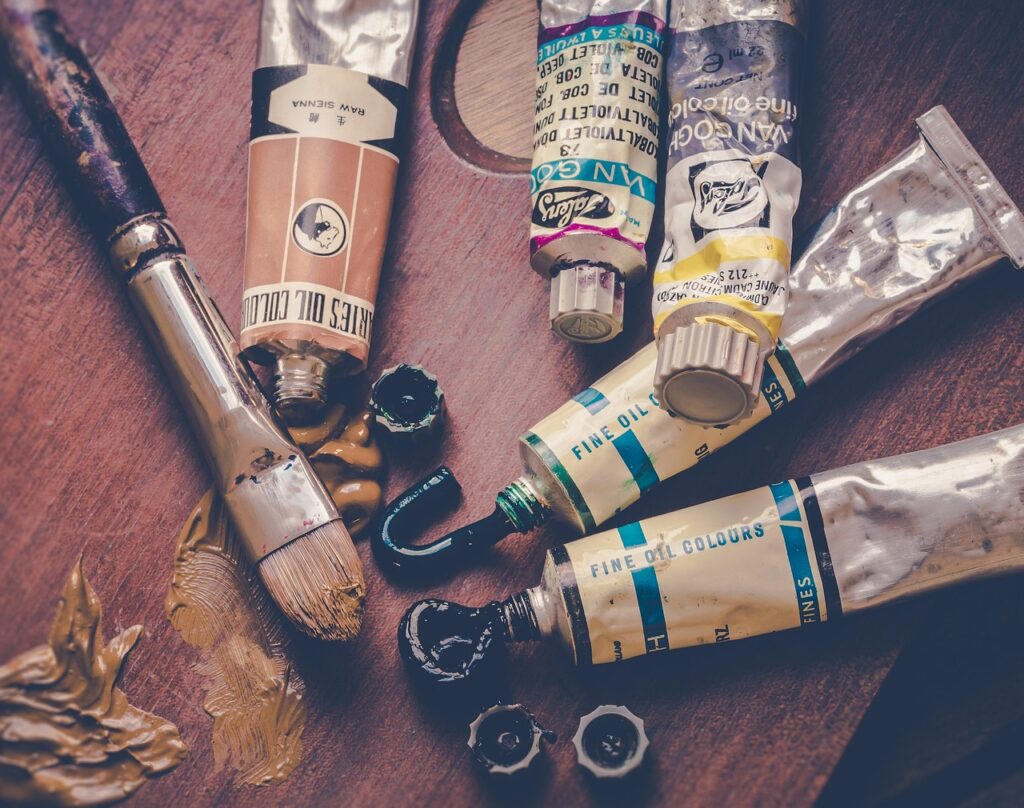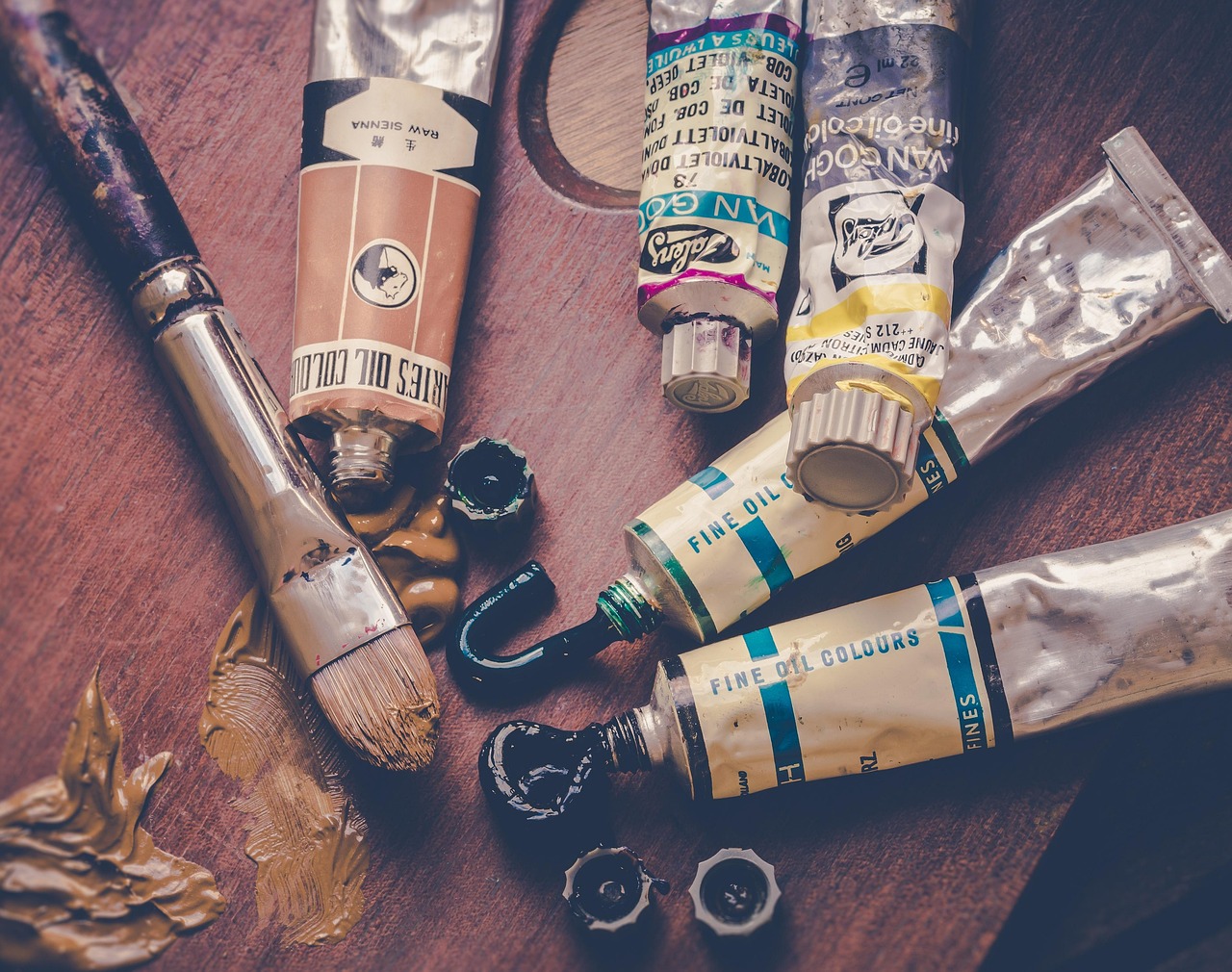
Oil painting is a timeless art form that has captivated artists for centuries. Its rich textures, vibrant colors, and versatility make it a popular choice for both amateur and professional artists.
If you’re new to the world of oil painting, it may seem daunting at first, but with the right approach, you can quickly grasp the basics and start creating beautiful artworks.
(Click Watercolor Painting for beginners for information on watercolor painting)
Let’s explore oil painting basics, how to learn oil painting, and we’ll provide tips for beginner oil pastel enthusiasts looking to transition to oil paints.
Understanding Oil Painting Basics
Oil painting is a medium that involves mixing pigments with oil, typically linseed oil, to create a paint that is rich in color and texture. The flexibility of oil paint allows you to work slowly, blending colors and building layers for detailed, luminous results.
One of the key benefits of oil painting is its slow drying time, which allows artists to make adjustments to their work even after hours or days of painting. This characteristic makes it ideal for artists who want to blend colors seamlessly or build up layers of paint gradually.
The oil painting process generally involves starting with an underpainting (a monochromatic sketch), followed by layering color from dark to light.
A technique called “fat over lean” is also essential in oil painting, meaning that each successive layer of paint should have more oil content to ensure proper drying and to avoid cracking.
(The Oil Painting Course You’ve Always Wanted: Guided Lessons for Beginners and Experienced Artists)
Choosing the Right Supplies for Beginners
If you’re just getting started with oil painting, having the right tools is essential. Here’s a list of basic supplies you’ll need for your first few projects:
- Oil Paints: Start with a basic set of oil paints that includes primary colors (red, yellow, blue), along with white and black. These will allow you to mix a wide range of colors.
- Brushes: You’ll need a variety of brushes, both flat and round, to work with different techniques. Synthetic brushes are a good starting point for beginners.
- Canvas or Panel: You can choose between stretched canvas or canvas panels. For beginners, pre-stretched canvases are convenient and affordable.
- Palette: A palette (usually a glass or wooden surface) is where you’ll mix your paints. A disposable palette pad is also an option for easy cleanup.
- Solvents and Mediums: Turpentine or odorless mineral spirits will help thin the paint and clean brushes. Additionally, an oil painting medium (such as linseed oil) will help with paint consistency and drying time.
- Rags or Paper Towels: These are necessary for wiping brushes and cleaning up spills.
Learn Oil Painting: Getting Started
When learning oil painting, it’s important to take a step-by-step approach. Start by experimenting with basic techniques before moving on to more complex compositions. Here are a few tips for beginners:
- Start with Simple Subjects: As a beginner, it’s best to focus on simple still life setups or basic landscapes. These subjects provide an excellent opportunity to practice essential skills like mixing colors, creating value (light and dark), and mastering brushwork.
- Master Color Mixing: Oil painting allows for a wide range of colors, but knowing how to mix them properly is crucial. Start by learning how to mix primary colors to create secondary ones and understand how to create different values and shades of colors.
- Layering and Blending: Oil paint is great for blending because of its slow drying time. To create smooth transitions between colors, practice blending colors directly on the canvas. This can be especially useful in portraiture or landscapes.
- Use the Fat Over Lean Rule: One of the most important oil painting basics is the “fat over lean” rule. When painting in layers, make sure each new layer has more oil in it than the previous one. This ensures that your painting will dry properly and prevent cracking.
- Experiment with Brushwork: There’s no right or wrong way to hold a paintbrush. Experiment with different brushstrokes—whether it’s long, smooth strokes or short, choppy ones—and see how it affects the texture and appearance of your painting.
Beginner Oil Pastel Artists: Transitioning to Oil Paint
If you’re already familiar with beginner oil pastels, you may find that transitioning to oil paints is relatively easy. Both mediums share similarities in texture and blending abilities, but oil paints offer more flexibility and depth in their application.
However, there are a few key differences you’ll want to keep in mind when making the switch:
- Oil Paints Are Thinner: Unlike oil pastels, which can be applied directly from the stick, oil paints must be thinned with solvents or mixed with mediums for consistency. Be prepared to work with these additional materials to achieve the right texture.
- Layering: While oil pastels allow for layering, oil paints offer even more control over the thickness and smoothness of each layer. You’ll be able to build up a painting with more precision.
- Drying Time: Oil pastels don’t dry in the same way as oil paints, which dry slowly and may require days or even weeks to fully cure. Keep this in mind when working with oil paints, as it will affect how you approach your painting sessions.
(The Oil Painting Course You’ve Always Wanted: Guided Lessons for Beginners and Experienced Artists)
Oil Painting Made Easy: Practice and Patience
One of the most important things to remember when learning oil painting is that practice is key. Don’t be discouraged by early mistakes or imperfections—each painting will teach you something new. Whether you’re experimenting with oil pastel techniques or diving into more complex oil painting projects, take your time, enjoy the process, and be patient with yourself as you develop your skills.
Remember, there’s no rush to create a masterpiece right away. By focusing on the oil painting basics and gradually building your knowledge and technique, you’ll find that oil painting is not only enjoyable but deeply rewarding.
In conclusion, oil painting is a fantastic medium for both beginners and experienced artists alike. By understanding the basic materials, techniques, and working through challenges, you’ll soon be on your way to creating your own beautiful works of art. So, grab your brushes and start your oil painting journey today!

